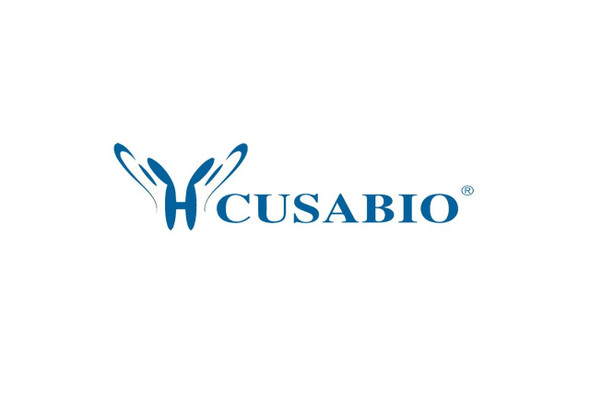Cusabio Human Recombinants
Recombinant Human Mucosal addressin cell adhesion molecule 1 (MADCAM1), partial | CSB-YP618776HUc7
- SKU:
- CSB-YP618776HUc7
- Availability:
- 3 - 7 Working Days
Description
Recombinant Human Mucosal addressin cell adhesion molecule 1 (MADCAM1), partial | CSB-YP618776HUc7 | Cusabio
Alternative Name(s): Short name: MAdCAM-1 Short name: hMAdCAM-1
Gene Names: MADCAM1
Research Areas: Immunology
Organism: Homo sapiens (Human)
AA Sequence: QSLQVKPLQVEPPEPVVAVALGASRQLTCRLACADRGASVQWRGLDTSLGAVQSDTGRSVLTVRNASLSAAGTRVCVGSCGGRTFQHTVQLLVYAFPDQLTVSPAALVPGDPEVACTAHKVTPVDPNALSFSLLVGGQELEGAQALGPEVQEEEEEPQGDEDVLFRVTERWRLPPLGTPVPPALYCQATMRLPGLELSHRQAIPVLHSPTSPEPPDTTSPESPDTTSPESPDTTSQEPPDTTSPEPPDKTSPEPAPQQGSTHTPRSPGSTRTRRPEISQAGPTQGEVIPTGSSKPAGDQ
Source: Yeast
Tag Info: C-terminal 6xHis-tagged
Expression Region: 19-317aa
Sequence Info: Extracellular Domain
MW: 33.4 kDa
Purity: Greater than 85% as determined by SDS-PAGE.
Relevance: Cell adhesion leukocyte receptor expressed by mucosal venules, helps to direct lymphocyte traffic into mucosal tissues including the Peyer patches and the intestinal lamina propria. It can bind both integrin alpha-4/beta-7 and L-selectin, regulating both the passage and retention of leukocytes. Isoform 2, lacking the mucin-like domain, may be specialized in supporting integrin alpha-4/beta-7-dependent adhesion strengthening, independent of L-selectin binding.
Reference: "Cloning of the mucosal addressin MAdCAM-1 from human brain: identification of novel alternatively spliced transcripts."Leung E., Greene J., Ni J., Raymond L.G., Lehnert K., Langley R., Krissansen G.W.Immunol. Cell Biol. 74:490-496(1996)
Storage: The shelf life is related to many factors, storage state, buffer ingredients, storage temperature and the stability of the protein itself. Generally, the shelf life of liquid form is 6 months at -20?/-80?. The shelf life of lyophilized form is 12 months at -20?/-80?.
Notes: Repeated freezing and thawing is not recommended. Store working aliquots at 4? for up to one week.
Function: Cell adhesion leukocyte receptor expressed by mucosal venules, helps to direct lymphocyte traffic into mucosal tissues including the Peyer patches and the intestinal lamina propria. It can bind both integrin alpha-4/beta-7 and L-selectin, regulating both the passage and retention of leukocytes. Isoform 2, lacking the mucin-like domain, may be specialized in supporting integrin alpha-4/beta-7-dependent adhesion strengthening, independent of L-selectin binding.
Involvement in disease:
Subcellular Location: Membrane, Single-pass type I membrane protein
Protein Families:
Tissue Specificity: Highly expressed on high endothelial venules (HEV) and lamina propia venules found in the small intestine, and to a lesser extent in the colon and spleen. Very low levels of expression found in pancreas and brain. Not expressed in the thymus, prostate, ovaries, testis, heart, placenta, lung, liver, skeletal muscle, kidney or peripheral blood leukocytes.
Paythway:
Form: Liquid or Lyophilized powder
Buffer: If the delivery form is liquid, the default storage buffer is Tris/PBS-based buffer, 5%-50% glycerol. If the delivery form is lyophilized powder, the buffer before lyophilization is Tris/PBS-based buffer, 6% Trehalose, pH 8.0.
Reconstitution: We recommend that this vial be briefly centrifuged prior to opening to bring the contents to the bottom. Please reconstitute protein in deionized sterile water to a concentration of 0.1-1.0 mg/mL.We recommend to add 5-50% of glycerol (final concentration) and aliquot for long-term storage at -20?/-80?. Our default final concentration of glycerol is 50%. Customers could use it as reference.
Uniprot ID: Q13477
HGNC Database Link: HGNC
UniGene Database Link: UniGene
KEGG Database Link: KEGG
STRING Database Link: STRING
OMIM Database Link: OMIM









